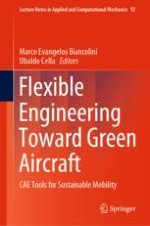This book discusses the recent advances in aircraft design methodologies. It provides an overview of topics such as shape optimization, robust design and aeroelasticity, focusing on fluid-structure numerical methodologies to address static and dynamic aeroelastic problems. It demonstrates that the capability to evaluate the interaction between aerodynamics, inertia and elastic forces is important to avoid drag penalties, control system efficiency loss and generation of potentially dangerous phenomena, such as divergence, control reversal and flutter. The book particularly highlights the advances in “high fidelity” CFD-CSM coupling, describing the latest experimental research to validate the numerical fluid-structure interaction analysis methodologies resulting from the EU-funded RBF4AERO and RIBES projects.
